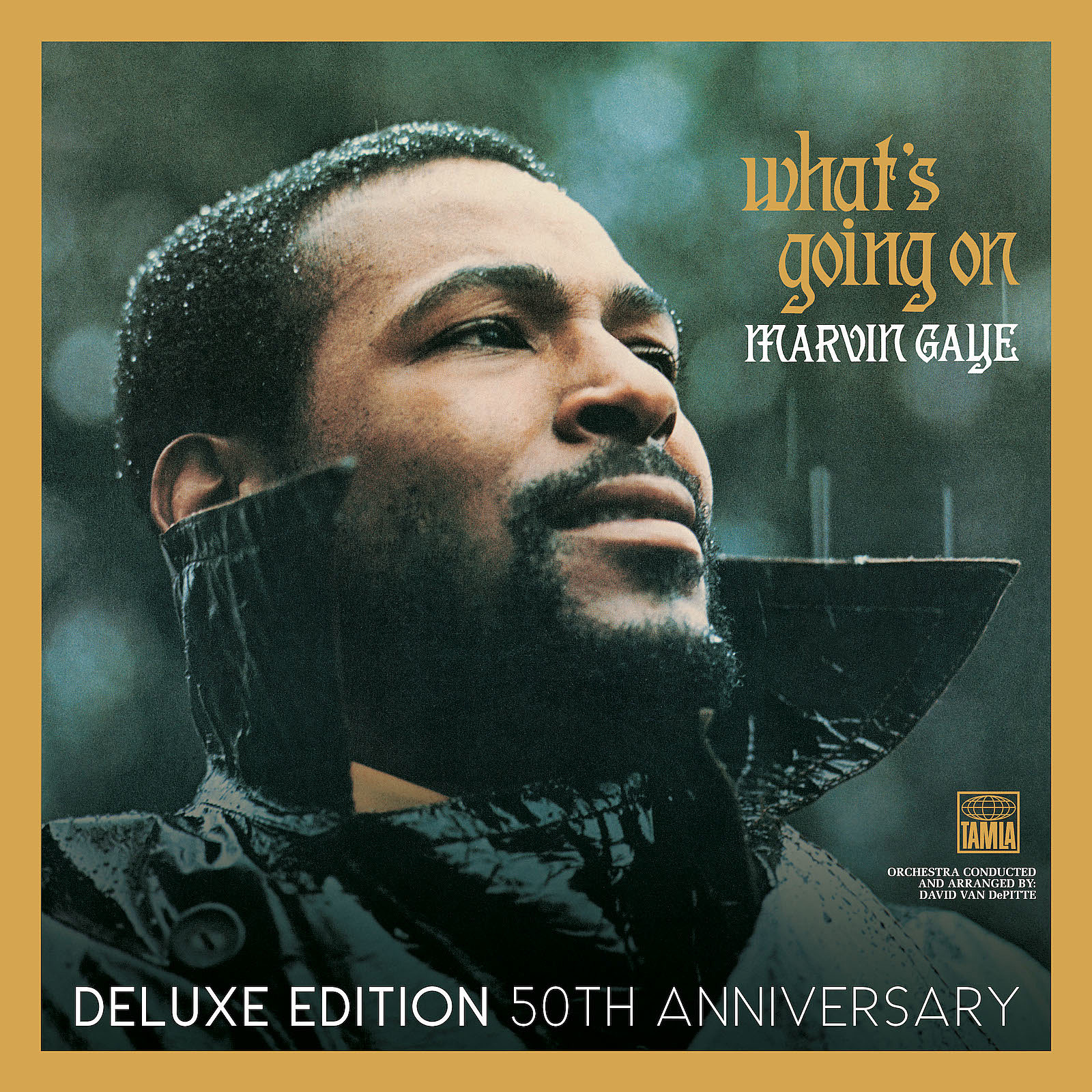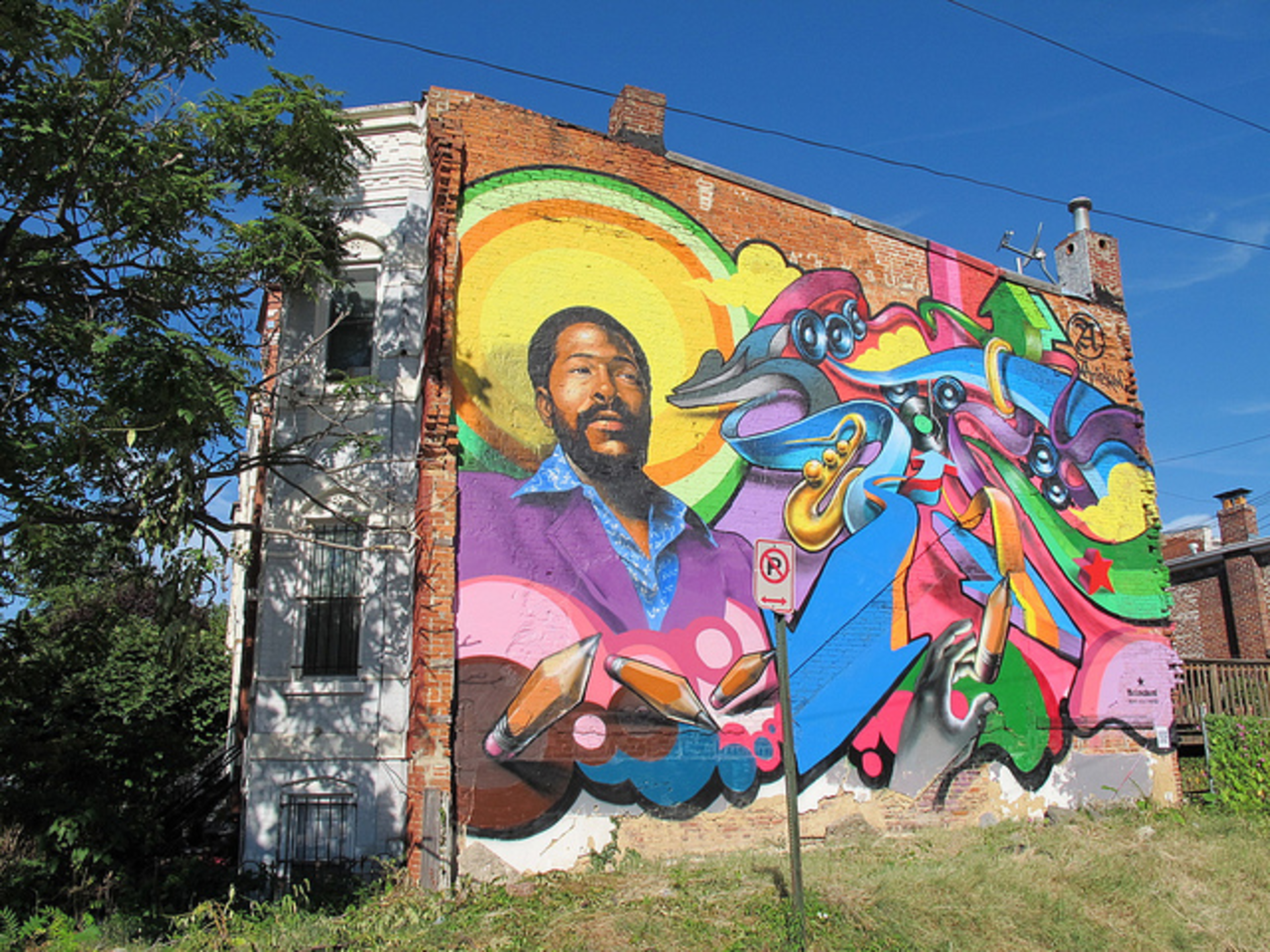
“What’s Going On”
The present-day relevance of What’s Going On is an acknowledgement of the creative mastery of the 1971 album and a reminder of the stagnation of society’s moral compass in its movement towards “justice for all.” Marvin Gaye’s creative genius is on full display on vinyl through the musicianship that helped create what is known as the “Motown Sound.” By the time of What’s Going On’s release, he was already known as a ‘Motown Star’ based on a career on a meteoric rise—that rise for Motown, as a label, and Marvin, as an artist, took place during the turbulent 1960s while the Jim Crow laws that legalized segregation in many states were on trial in the streets and eventually in the halls of leadership.
What happens when an artist decides their role is no longer to take listeners away from reality, but to create the soundtrack that presents reality as a movie where we are the stars on set?
What happens when an artist is drawn to change the successful formula that established them within a given industry space?
Those were the questions Marvin Gaye found himself confronting as he wrote and recorded What’s Going On for release in 1971. ’71 America was fighting a war in Vietnam, three years removed from the assassinations of Dr. Martin Luther King Jr and Robert Kennedy. Income and systemic inequalities were growing rampant throughout the nation, with pressure on many inner-cities. These were the headlines that found their way into the studio and auditioned their way into the heart and soul of Marvin Gaye, eventually making their presence felt in the creation of what would become a classic and immeasurably influential album.
What was viewed as an act of potential career suicide by some Motown leadership, became a fountain for social and spiritual immortality. Marvin’s musical pivot from entertainment to enlightenment has continued to resonate as a Black American family heirloom for generations—and you can hear infinite echoes of the sound in all the music we listen to now.
When we listen to What’s Going On today: Are we listening to melodic descriptions of problems that seemingly don’t have an expiration date, or do we listen for and respond to the calls to action within this masterpiece?
—
“Save the Children”
Marvin sang, “Only love can conquer hate,” and for most of my life I’ve heard more debates about what is love and what is hate. His passionate and urgent call to save the children has been tragically ignored by the systems and people who are supposed to care for the children the most. Schools that could potentially provoke imagination in young minds have become prison pipelines—as funding for education has been reallocated to invest in incarceration it has shifted the course of life for generations.
—
“Inner City Blues (Make Me Wanna Holler)”
Hip-Hop and the Blues ring those same bells with many of those same urgent calls. Great music has a way of pulling from genres that precede it to serve as a creative initiator of genres to come. What’s Going On as an album can be viewed as a bridge from Blues to Hip-Hop. If you listen to T-Bone Walker’s “Stormy Monday” you will hear a song that looks at life through challenges of each day of the week. If you listen to “Inner City Blues (Make Me Wanna Holler)” you hear the cycle of a societal misappropriation of funds and values that causes Marvin to simply say “this ain’t living.”
The titles “Stormy Monday” and “Inner City Blues (Make Me Wanna Holler)” speak to the conditions of Black people within the inner cities throughout America. The songs serve as tools to let people within these situations know that they are not alone, and for those who don’t live in these situations; these songs provide a form of music social commentary.
Music also provides a way of critically analyzing life, often through the use of figurative language to evoke visualization as a tool for understanding. This continuum of musical social commentary presents itself in early Hip-Hop, especially in Grandmaster Flash and the Furious Five’s “The Message” where the urban setting is referred to as a Jungle. In all three songs there is a hope that presents itself, provoking the listener to acknowledge there is something inside of them that keeps them pressing on.
—
“Flyin’ High (in the Friendly Sky)”
The 50th anniversary of What’s Going On finds us as a global society dealing with a pandemic that has brought to light many of the paradigms some thought were only in people’s minds. There are still “trigger-happy policemen” and I’m sorry to tell you mother, “they” are still judging us “simply ’cause our hair is long.” The pain that may have been relegated to the night in “Flyin’ High” is now present during the day. In “Flyin’ High” Marvin equated drug use with flying in the friendly skies. “Fly the friendly skies” was a slogan used by United Airlines beginning in the mid 1960s.
On the album, “Flyin’ High” is followed by “Save The Children.” If we think about the impact of the flights that Marvin discussed in “Flyin’ High” and continue the metaphor of flight representing life choices, what would be the flights of our children? The children are boarding flights that aren’t equipped with tracking equipment or oxygen masks to aid them if a loss of cabin pressure is actually the pressures of life. Adults seeking to block their flight as backwards air traffic controllers are positioned on street corners, standing in the way of the children and families navigating their way to school and work.
We are in a moment where what it means to be an American is under attack from all sides. Do I pledge allegiance with my hand on my heart, with closed eyes, in hopes I am protected from the projectiles of lies?
“…talk to me so you can see what’s going on…”

Mural by Aniekan Udofia
There are many whose eyes and hearts have been opened over the events of this past year and yet the events of this past year are already on the album we are celebrating at this moment. Marvin Gaye warned us fifty years ago. In listening to What’s Going On more times than I can count, oftentimes a line or two will jump out to me and grab my full attention. As I reflect on the 50th anniversary of What’s Going On and the one-year mark of the murder of George Floyd; I keep hearing Marvin say, “Talk to me so you can see what’s going on.” If we think of “seeing” as both a visual and a mental recognition, we can begin to understand the power of our stories being told and shared with one another. If we begin to see one another as human—enough to have a story that is worth being told and heard—then we will begin to respond to the calls to action within What’s Going On.
Can I learn to listen to you talk without vetting your words against the experiences that shape my reality?
Can I learn to believe you at your words without challenging you to prove your pain is real enough for me to feel?
Can I learn to ask the questions that make you feel I want to hear your words as opposed to asking questions wrapped in judgements of your existence before you ever utter a word?
—


L: Where Are We Going? by Timothy D. Jones // R: Timothy D. Jones
Where Are We Going?
To create a space for conversations that lead to agreed upon calls to action, I was led to delve into What’s Going On and create Where Are We Going?, a book of 10 poems that challenge us to look at ourselves as a society whose existence has spanned two-and-a-half generations since the release of What’s Going On. I could’ve crafted this essay and book as a musical critique of Marvin’s masterpiece, but I believe there is a place and space where that already exists. When I think of Soul music, I believe there is too much emphasis on the quality of the music and not the condition of the soul. What’s Going On is an album I classify as “Spiritual Soul” because of the timeless regard for the musical work and the eternal existence of our spirit and soul. We find ourselves in a moment where the realization of What’s Going On must be realized by us all in order to change the direction of where we are going.
—
I invite you to join in the “Where Are We Going” conversation by purchasing a book here: Where Are We Going?
—
Keep up with Timothy D. Jones on Twitter.


